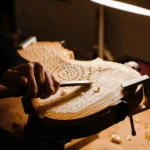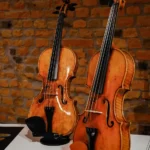A Brief History Lesson: Classical Period Music
Back to BlogAround the mid-term of the 1700s, the Classical Period Music took over since the Baroque era was winding down, and it lasted approximately until 1820.
What was the Classical period music?
The music of the Baroque period was more ordered and complex than that of the Classical period, which focused on simplifying things a little bit while also making them bigger.
During the Classical period, composers and performers came mostly from Europe. However, it didn’t take long for the music to find its way to European colonies around the globe. Many great composers lived in Vienna, which was at that time the musical center of Europe.
It maintained many styles of the Baroque tradition; however, it also emphasized elegance and simplicity.
Plain old simple tunes replaced the more complex polyphonic music, and composers like Haydn and Mozart gained popularity because they were so skillful at writing these simpler tunes.
The instruments of the Classical period were constantly changing and evolving as various bright sparks came up with handy innovations, and the piano was the main one. The second development in the Classical era was the orchestra’s expansion, which started in the Baroque era. However, now instruments such as the clarinet, flute, horns, and oboe had improvements and got their own section in a standard orchestra.
As more and more symphonies were being composed, the orchestra became more like the orchestras we see in concert halls today. String quartets also emerged during this time period.
The Classical period in music saw a huge increase in the number of different types of pieces, including symphonies, concertos, and solo instrumental works.
In contrast to the elaborate melodies and ornaments of high Baroque music, the new style of music featured simple melodies backed by larger ensembles.
Classical period music was the time when composers were writing music to fit in with the rules and standards they had been given. As time went on, they began to put their own feelings and emotions into the music – leading to a more Romantic sound.
During the Classical Period, composers formalized many musical forms such as the symphony and concerto. They also began including more notations as to how their works were to be performed. While the era of the virtuoso had yet to come, composers began transitioning from servants of the Church or court to celebrated artists during this time period.
Classicism and more access to music
During the first half of the eighteenth century, a stylistic movement known as Classicism flourished. Classical scholars revered ancient Greece, especially the works of fifth-century Greek artists and the architecture of Classical Greece. During the Classical era, Classical music was based on the art of Classical antiquity. It embraced order, simplicity, strength, and a celebration of humanity—all values associated with Greek culture.
Classical composers were still working for the courts of aristocrats but also performed public concerts throughout Europe, making the music more egalitarian than Baroque music. In that way, some people from the middle classes had the chance to be part of the musical forms, and music became more accessible.
The talented composers behind the writing from the Classical Period Music
The city of Vienna was the epicenter of European classical music, and some of the composers who worked out of Vienna were sometimes referred to as members of the Viennese school of composers.
Some famous members included Wolfgang Amadeus Mozart, Franz Joseph Haydn, Franz Schubert, and Ludwig van Beethoven. Other composers included Johann Christian Bach, Carl Philipp Emanuel Bach, Christoph Willibald Gluck, Antonio Salieri, and Muzio Clementi.
Did you like getting to know about this period of music? Subscribe to our newsletter to receive weekly content about violins!









